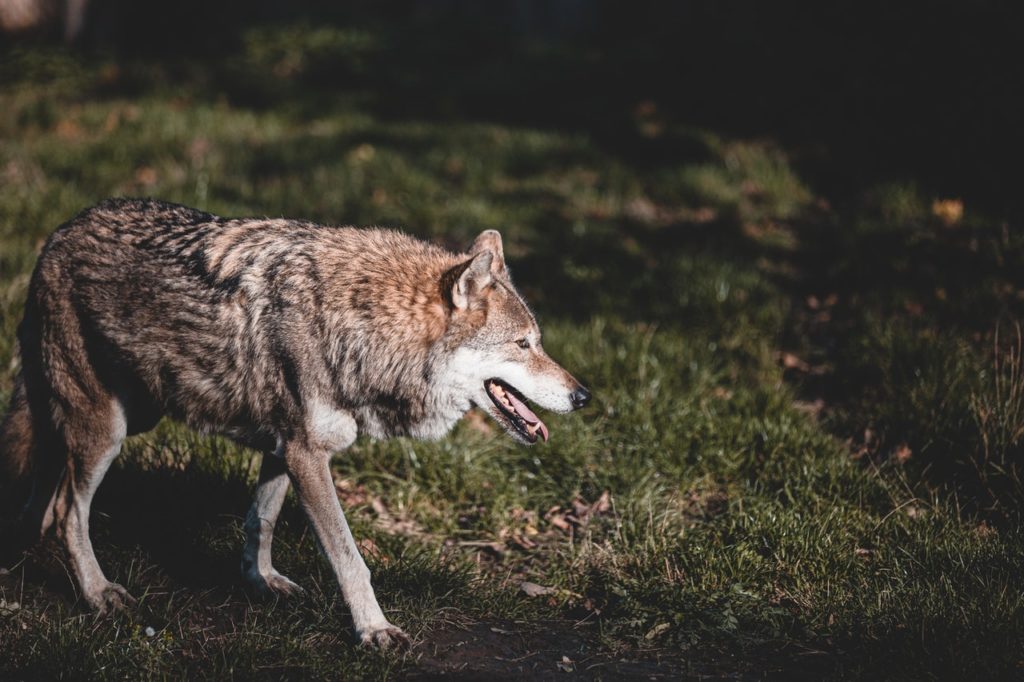
I learned this today. When dogs were domesticated, their temperaments changed, their skulls, teeth, and paws shrank, their ears flopped, they became docile, their coats changed color, and they learned to read human expressions.
Nobody really knows where dogs were first domesticated. There is some evidence that it was in China over 30,000 years ago. There is other evidence to say it was in Europe over 20,000 years ago. There is more evidence to say that these could have been the same species. There is yet more evidence to say that it could have happened twice, separately. Nobody knows. However, the animal that was domesticated is not in dispute. DNA analysis has shown that it was a now extinct Late Pleistocene wolf. The modern grey wolf is the closest living relative to the dog.
The domestication of animals changed human trajectory on this planet. We moved from being hunter-gatherers to settling down and raising crops and animals. This led to townships, then cities, and, in course, all of the technological advances we have today. The very first animal to be domesticated was the dog. The dog is also the only large carnivore that humans have successfully domesticated. The dog is also the only animal domesticated by hunter-gatherers. All other animals were domesticated after farming became prevalent.
Why dogs were domesticated is also unknown, but there are several theories. It was probably a little of all of them. Wolves would have been domesticated to help with hunting. They are pack animals, and they are intelligent. If they can consider humans to be in their pack, then they would be very useful. They were also useful as protection. They can guard a camp and warn when predators approach. They have better senses of hearing and smell than we do. But what is in it for the wolf? Here is the other theory. Humans probably had more meat than we could eat, and we gave the left-overs to the wolves. Wolves are carnivores and can live only on meat. They can live on lean meat. We are not carnivores and cannot. Lean meat contains mostly proteins and wolves’ bodies are adapted to deal with that. Our bodies need fats and other things, so we cannot survive on only lean meat. When we had too much meat, we probably gave the leftovers to the wolves. Wolves, being intelligent, probably realized that they could get more food if they hunted with humans than if they hunted alone. There is probably no one reason, but a mix of all of these.
Once wolves started to be domesticated, they underwent some changes. These changes helped future wolf generations, now dogs, fit in more with their human companions. All of these changes can be put down to domestication syndrome, which is where animals that have been domesticated undergo changes that they couldn’t survive if they were still in the wild.
A lot of these changes are brought about by neural crest cells, which are a type of stem cell. They can become many other things. Neural crest cells contribute to the development of the adrenal medulla, which is part of the adrenal gland in the brain. This is the part of the brain that releases adrenaline and noradrenaline when an animal is alarmed. It is the root of the fight or flight response. Domesticated animals obviously still have this, but it is nowhere near as important for them as for a wild animal. So, it shrinks. If humans find a friendly wolf and breed it with another friendly wolf, the offspring will have a weaker neural medulla.
These neural crest cells also create cartilage. Erect ears need cartilage. Domesticated dogs don’t have as many neural crest cells, so they produce less cartilage and have floppy ears. Neural crest cells also become melanocytes which create darker skin and fur. Neural crest cells in domesticated dogs don’t spread uniformly through the dog, so the coat becomes splotchy, particularly on their chest or above their eyes. The neural crest cells are also responsible for bone development. They are downgraded in domesticated dogs, so the skulls and paws, don’t develop to the same size as a wolf.
Understanding human facial expressions was selectively bred. Dogs that worked well with humans would have been chosen to mate, creating offspring with the same or better ability to understand humans. This is selective evolution. It is the reason why dogs are some of the only animals that can understand finger pointing. If you point at something, most animals will look at your finger. Dogs have learned to follow where you are pointing.
So, when wolves were domesticated, they underwent a lot of changes because their neural crest cells were downgraded. They developed different colored coats, floppy ears, docile temperaments, and other changes. These would be a disadvantage to a dog in the wild, but they don’t need them because they are no longer in the wild. Dogs that appeal to and can work with humans have an evolutionary advantage. And this is what I learned today.
Photo by Anna Hinckel from Pexels: https://www.pexels.com/photo/brown-and-white-wolf-on-green-grass-5873593/
Sources
https://www.sciencedirect.com/topics/medicine-and-dentistry/neural-crest-cell
https://bigthink.com/life/mystery-behind-dogs-domestication-syndrome/
https://www.smithsonianmag.com/science-nature/how-wolves-really-became-dogs-180970014/
https://www.pnas.org/content/118/6/e2010083118
https://www.theatlantic.com/science/archive/2016/06/the-origin-of-dogs/484976/
